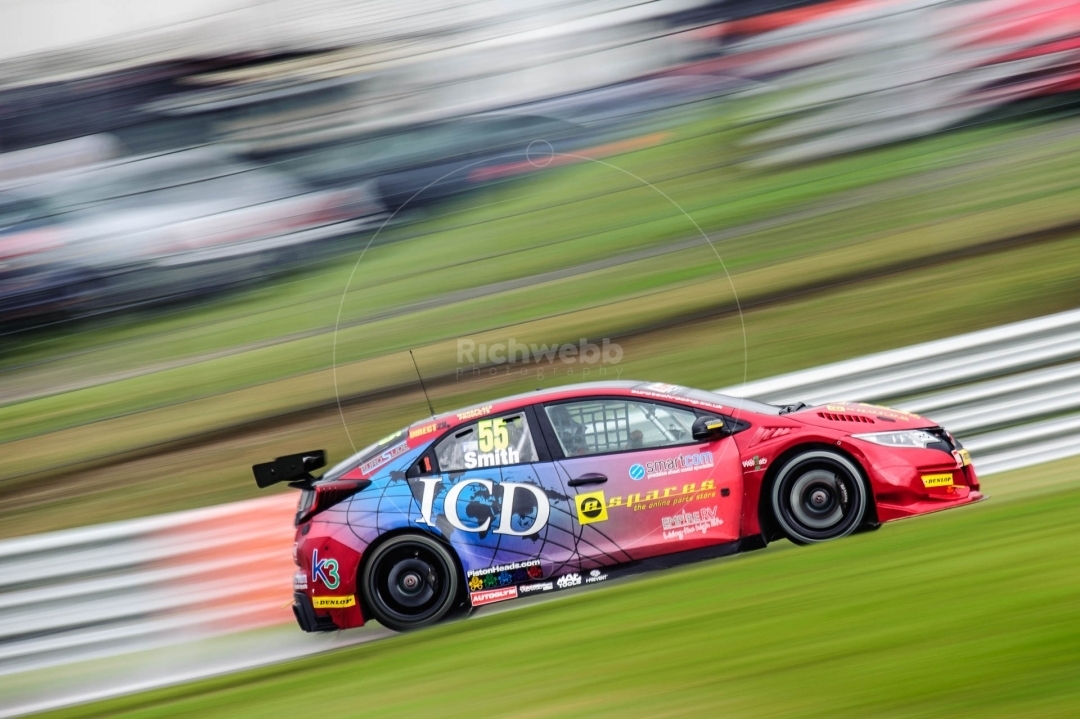Another trip to Brands Hatch for the finale of the the 2016 BTCC. Considering that in February I had never been to Brands, I’ve now walked those Kent-shire hills a total of four grand times.
Not a great deal you’ll probably think, and I would agree. It certainly isn’t enough to assume one is experienced or familiar with the circuit. At least that’s my opinion.
In my brief experience of Brands, as with other circuits I have visited this year, I found it’s a track with several easy angles; corners and view points where it’s pretty easy to bag a decent image.
The classic shot around Druids, no fence, or the spectators favourite as the cars drop down Paddock Hill. They are kind of obvious, but staples of the amateur photographer.
I’ve shot those images, and I’m now thinking the trick is to not get stuck shooting the same angles on each visit.
But how do you mix it up when all you can do is go to the same places, walk the same footpaths and visit areas that are always frequented by other intrepid shooters?
You have to mix it up. Considerably. Especially with your technique.
Throughout the year, as my photography has (hopefully) developed, I have begun to crave new approaches to capture different images.
I have noticed similarities in my shots, especially with visits to the same circuits, shooting in the same surroundings, with only the weather, cars and amount of onlookers the only real variables.
I’ve noticed that the more I shoot, the harder it gets to avoid the green of the grass verges, or the tint of the fence as I pan through it. There’s only so many times you can shoot a splitter at an apex.
Without the access to un-obstructed views and circuit vistas, it’s going to get even more difficult to generate variety, sot a broader range of technique is the way forward.
This visit to Brands, I get with the motion. The only way to loose the repetition of all the fences, barriers, trees and bright orange marshall suits.
Now I don’t find panning easy at all. Infact, it’s bloody tricky. Shooting in an autumn blazer also doesn’t help those exposures. By that I mean the bright sun of a very clear October weekend.
I can only get my camera to go so slow, and my monopod slowly collapses under the weight of my kit.
“Buy a new one” I hear you scream! Yes. That may well be my next investment.
After almost a season of practice capturing motion, observing others work and attempting to figure out how they produce the fine results they do, I am pretty certain I have learnt this much:
Your choice of subject and placement on the circuit is key, regardless of where you stand.
It’s harder to pan through a turn or if your subject is going toward or away from you. subject that move on more than one plane are much harder to follow. Monopods are a necessary tool if the seriously slow shutter speeds are used…and I still need a lesson in effective monopod-age.
Free hand is tricky using a 600mm lens at distance, and I can’t get close enough to rock out with shorty, so it is the only way.
Sure it’s a bit of struggle sometime, but when it works, happy days. I’m starting to envisage angles and images I think might make a good image more often, even if I burn close to 250 frames trying to hit that magical millisecond.
I believe I’m beginning to understand what I need to do to achieve a better results…and that’s certainly something I can look forward to working on next season.
But for now…I hope you enjoy my interpretation of the BTCC finale.



































0 Thoughts on Blurred Similarities.